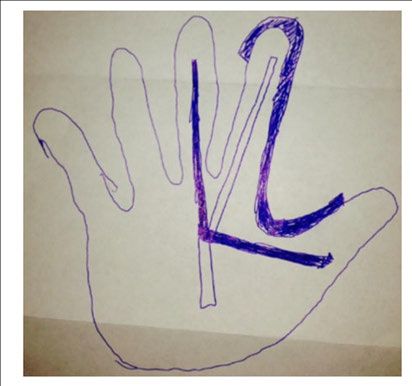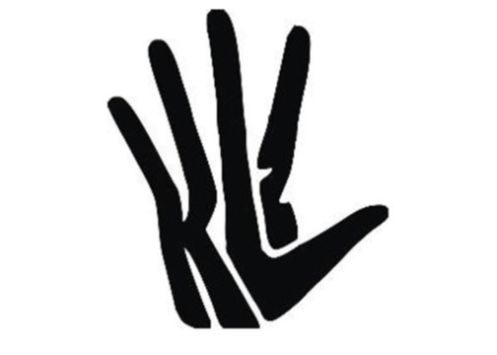Kawhi Leonard, one of the NBA's biggest stars, was in the news recently. This time, however, it was not for hitting a game-winning shot or winning the NBA Finals. It was because of a lawsuit. A federal district court ruled on Leonard's legal claim that he, rather than Nike, owned what he called the "Leonard Logo." And this time, Leonard lost.
Leonard filed suit against Nike in 2019 in the Southern District of California seeking a declaratory judgment on copyright and trademark claims. Leonard asked the court to declare that he, not Nike, created the Leonard Logo used on some Nike merchandise. According to Leonard, he had worked on the logo since early in his college career, basing it on his "notably large hand," a stylized version of his initials "KL," and his number as a player, "2." In his complaint, Leonard recognized that he was under contract with Nike from 2011 to 2018 and that he shared with Nike a version of the Leonard Logo that he refined in December 2011 or January 2012 (the "Leonard Sketch"). Further, while Leonard alleged that he rejected some of Nike's ideas regarding how the Leonard Logo might be modified, he recognized that he accepted a proposal Nike made in June 2014 and granted it permission to use what Nike called the "Claw Design" on Nike merchandise.
This was the Leonard Sketch:

This was the Claw Design:

Leonard asserted in his complaint that despite Nike's involvement in the creation of the final version of the logo, the Claw Design, he never transferred the rights to this logo to Nike and instead simply allowed Nike to use the logo for "their mutual benefit." Indeed, Leonard asserted that Nike registered the logo without his knowledge or consent. Accordingly, Leonard asked the court to issue a declaratory judgment that he was "the sole author" of the logo, that his use of the logo did "not infringe any rights of Nike," and that Nike committed fraud on the Copyright Office when it registered the logo.
In its answer to the complaint, Nike told a different story. It argued that Leonard only provided Nike with a rough sketch of a proposed logo, and that Nike's designers were the original creators of the logo design the parties settled on, the Claw Design. According to Nike, it owned the Claw Design because it was a "new" design that was created by Nike designers "in connection with" the contract between Leonard and Nike. Indeed, Nike argued that it actually didn't matter who created the logo—Leonard, Nike, or the two working together. Under their contract, Nike said, if the logo was created "in connection with" the contract, Nike owned it.
After the case was transferred to federal court in Oregon (based on a forum selection clause in the contract), Nike moved for judgment on the pleadings. The court held a telephonic oral argument during which it orally granted Nike's motion, and it issued a written opinion explaining its oral order and ruling on Nike's remaining counterclaims.
As the court explained, Leonard's argument was that the "Claw Design" was "a mere modification" of the preexisting logo that he had created independent of Nike and the Nike contract. But the court flatly rejected that argument, noting that at oral argument, it held that the Claw Design was "(1) a new piece of intellectual property (2) created 'in connection with' the Nike Contract"—which meant that it was owned by Nike.
The court went on its opinion to supplement its analysis on these two points. Further, the court recognized that in reaching its decision, it had to accept the factual allegations in Leonard's pleadings as true. Accordingly, the court supplemented its analysis based not on how it viewed the facts, but on what Leonard asserted in his pleadings.
First, on the question of whether the Claw Design was new, the court discussed the history of the design, from Leonard's initial conception of a logo to his acceptance of a Nike proposal for a modified design, which culminated in Leonard granting Nike permission to use "that logo, based upon the [Leonard Sketch], on Nike merchandise during the term of the Nike Agreement." Thus, the court said, "for the reasons stated at oral argument [which it didn't repeat], the Claw Design constitutes a new, distinct piece of intellectual property." And second, on the question of whether the Claw Design was created "in connection with" their contract, the court noted that during the contract term, Nike and Leonard discussed creating a "unique logo" that Nike could affix to "new Nike merchandise, which Leonard wore and endorsed, and which Nike sold." As the court observed, "Not only was this activity done 'in connection with' the Nike Contract, it represents the whole point of the Nike Contract." Thus, the court confirmed its conclusion at oral argument—Nike was entitled to a declaratory judgment that it "owns the Claw Design and the right to register a copyright for it."
The court then granted one of Nike's five remaining counterclaims while denying the rest. Specifically, it denied Nike's requests for judgment on its copyright infringement and copyright cancellation counterclaims, and on two of its breach of contract counterclaims. In essence, the court found that the actions these counterclaims were based on were committed by Leonard because he believed that he was the rightful owner of the Claw Design—so there remained issues of fact regarding possible defenses. But the court granted Nike judgment on its final counterclaim—that Leonard breached the contract between Nike and him when he decided, notwithstanding that the contract's forum selection clause required any dispute arising under the contract to be litigated in Oregon, to file suit against Nike in the Southern District of California.
This case is Leonard v. Nike, Inc., 3:19-cv-01586-MO (D. Or. May 18, 2020).
The content of this article is intended to provide a general guide to the subject matter. Specialist advice should be sought about your specific circumstances.
[View Source]
